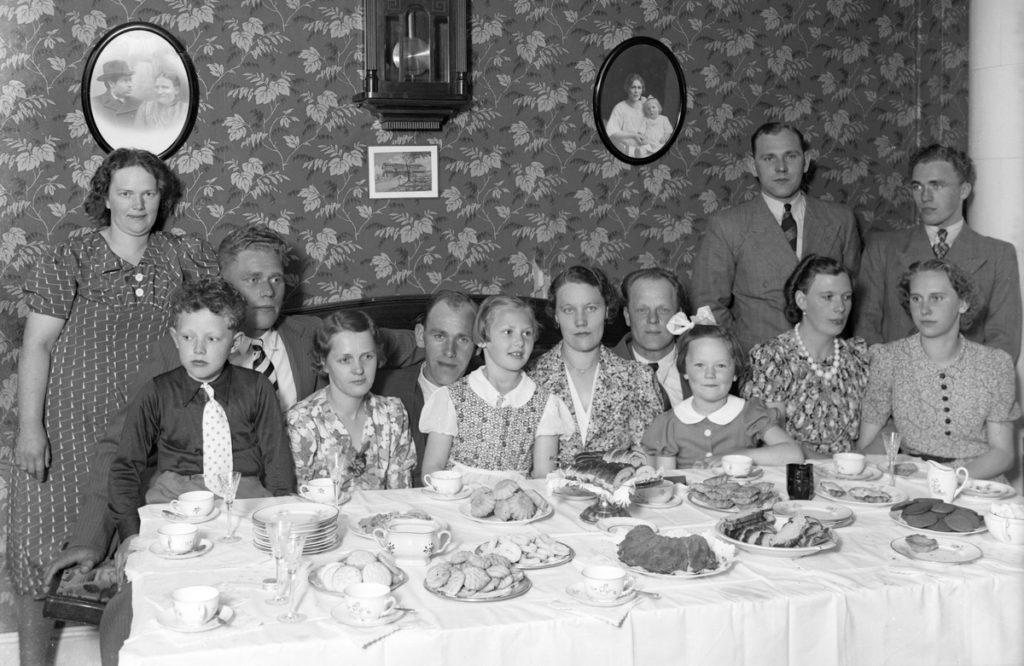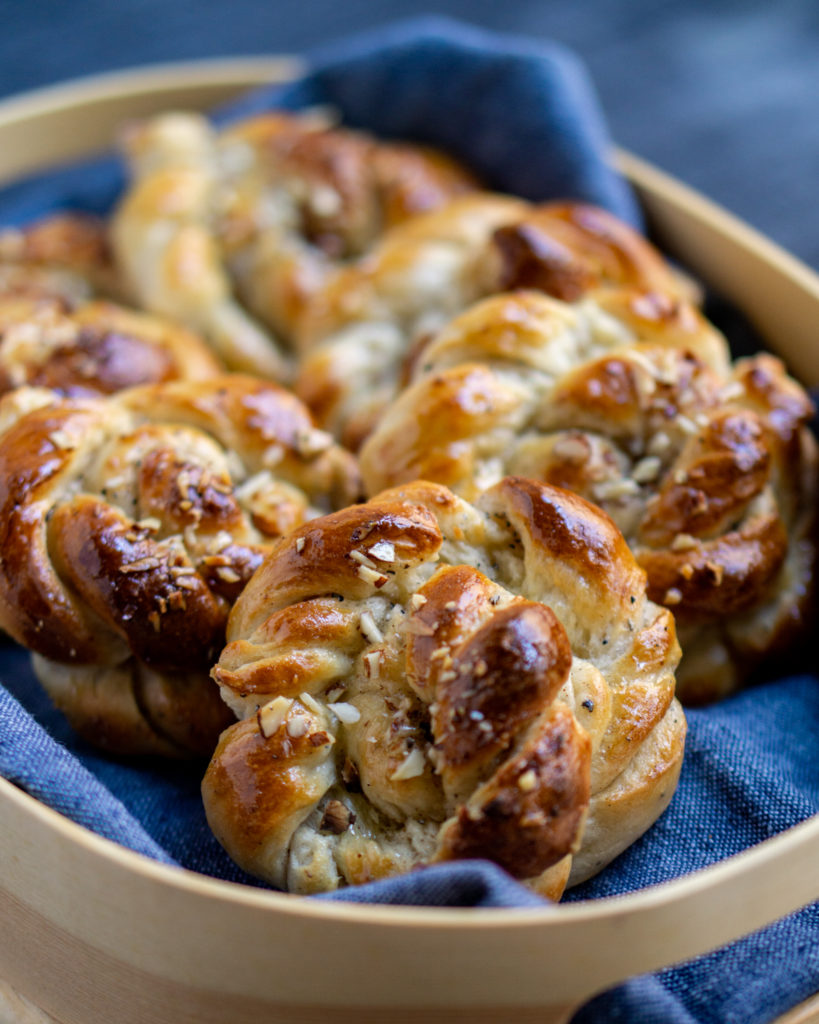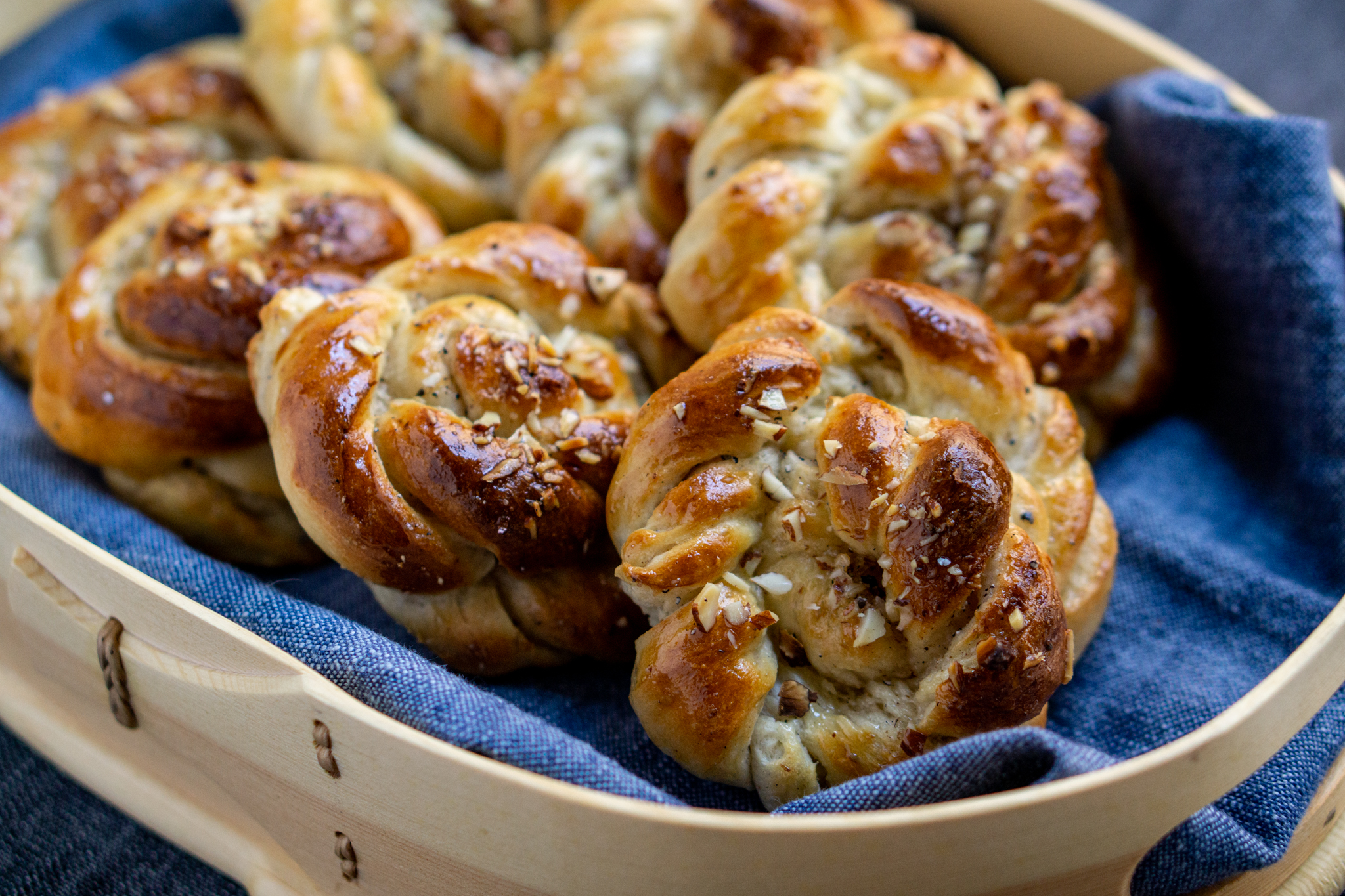Have you ever thought of what things you take for granted in your culture? Sometimes, these little things only become visible in juxtaposition with another. Cardamom is so ingrained in Swedish baking that I didn’t notice until I moved to London, UK. While I (reluctantly) accepted that there were no cardamom buns, it took me a while to realize why the sweet breads tasted so different.
While I’m doing my best to evangelize cardamom, I know that it can take more than a little good will to learn to use a new spice. And someone else who knew this was Ulla, Swedish woman who was part of the Swedish church in Melbourne in the late 50s. The church received a call from a local baker who needed help translating a recipe for svenskt vetebröd for a customer’s special request.
Now, I speak from experience when I say that converting recipes from one measuring system to another can be a somewhat precarious undertaking… The church workers did their best to recalculate deciliters and grams to pints and pounds. What won’t we do to spread the gospel of cinnamon buns and cardamom wreaths, right? The kind people even told the baker where in Melbourne she could find cardamom.
A few days later, the baker called to verify how much cardamom she really needed for the recipe. And then, to ask for suggestions for what she could do with the half kilo (two pounds) that she had left…
I don’t know what the church suggested, but how about 50 batches of cardamom buns? Sounds like heaven to me!
Jump straight to the recipe by clicking here.

So when did the Swedish cardamom obsession start?
Sundhetzens speghel from 1642 lists a few spices, but no cardamom. The earliest confirmed mention seems to be in Åke Rålamb’s 1690 recipe for glögg, although it does turn up in Count Brahe’s hand-written recipe book from the 17th century. If we skip ahead to 1755, Kajsa Warg uses cardamom in several of her recipes, such as donuts, curd cakes, and a dish made from a cow’s first milk.
Swedish food writer Hiram mentions that gentlemen in the 17th century chewed cardamom as they rushed to amorous trysts. Apparently, it was considered an aphrodisiac (although food historian Jan-Öjvind Swahn claims that it could be used for hiding alcohol-breath, too).
At this time, cardamom is a luxury, as it required long and perilous journeys to get it to Europe. It becomes more common during the 19th century—the cookbooks by Björklund (1847), Zetterstrand (1863), and Hagdahl (1896) all feature plenty of cakes, cookies and dessert flavored with cardamom.
Sweden + cardamom = <3
Swedes have been fond of cardamom for a long time, but it all started to go overboard in 1950. As I searched for cardamom related recipes in Svenska Dagbladet’s archive, I noticed an explosion in recipes that year. Cardamom buns, wreaths, braids, and cakes—now was their time.
While I haven’t found sources on it yet, the increase seems related to the end of the regulations and rationings of the war and post-war period. A sought-after luxury suddenly becoming plentiful and more affordable would be a reasonable explanation for the deluge of cardamom doughs.
According to food historian Jan-Öjvind Swahn, three areas are responsible for the most of the world’s cardamom consumption today. There’s India, where people cook with cardamom. Then, the Near East, particularly Saudi Arabia, where cardamom flavors the coffee. And then, there’s the Nordic countries, where cardamom is almost mandatory for baking. On average, a Swede eats 60 times as much cardamom than someone from the US, UK, or Russia. Apparently, these poor fellows eat less than half a gram per year. Fins “only” eat 25 times more…
I must be an outlier that ups the Swedish average, as 30 grams of cardamom doesn’t last me long. (Swahn’s book was published in 1995 when I was still a child, so maybe I hadn’t managed to ruin the statistics yet).
True, the cinnamon bun has branded itself internationally as a Swedish delicacy. However, the flavorful cardamom bun is worthy of just as much attention.

How to make Swedish cardamom buns
I’ve developed this recipe over a period of time. All to maximize the flavor of cardamom! If you want to make the most out of these, I’d say it is almost mandatory (sorry!) to get whole cardamom seeds and grind them yourself. Ready-ground cardamom will have lost so much of its flavor, and if you get the green pods, you’ll have to spend a long time picking them apart. Makes 30-35 depending on size
The dough
5 dl (2 cups) milk
50 gr (1 1/2 ounces) fresh yeast
1 tbsp freshly ground cardamom
1 dl (2/5 cups) sugar
1 tsp salt
about 13-14 dl (5 1/3 to 5 1/2 cups) strong flour (vetemjöl special)
150 gr (2/3 cups) butter, room temperature
The filling
200 gr (7/8 cups) butter, room temperature
1 1/4 dl (1/2 cups) sugar
1 1/2 to 2 tbsp freshly ground cardamom
Finishing
1 egg for eggwash
1 dl (2/5 cups) sugar
1 dl (2/5 cups) water
optional: one pinch vanilla powder
1/2 dl (1/5 cups) raw sugar, pearl sugar, or chopped almonds
2-4 tsp ground freshly cardamom
- Put the milk in a saucepan and let it become lukewarm. Crumble the yeast into the bowl of a stand mixer, and stir it with some of the milk to dissolve it. Add the rest of the milk.
- Grind the cardamom with a pestle and mortar if you haven’t already. Add the cardamom, sugar, salt, most of the flour, and the butter to the stand mixer. Let it run for around 10 minutes or until the dough is elastic. Check if you need to add more flour—the dough should be somewhat sticky but not runny.
- Cover the bowl with a towel and let it rest for around 40 minutes, or until it has doubled in size.
- Meanwhile, prepare the filling: stir the butter with sugar and cardamom until it is evenly blended.
- Prepare baking trays with paper baking cases or greased baking paper.
- When the dough is ready, place it onto a flat and clean surface. Roll it out to a rectangular shape by using a rolling pin. Spread the filling over the dough and fold it half lengthwise so you get a long, thinner rectangle. Press the dough down gently so the sides stick together.
- Cut the dough into 1 1/2 cm (1/2 inch) strips. Take one strip and twist it, then roll it up around a finger or straight on the baking board. Place the bun in a baking case or on the baking paper. Repeat until you’re done.
- Cover the trays of buns with towels. Turn on the oven on 225°C (435°F). Let the buns rest for 30 minutes. While the buns are resting, put the 1 dl (2/5 cups) of sugar and of water in a saucepan, maybe with a bit of vanilla powder, and let it simmer until the sugar is dissolved. Gently whisk the egg for the eggwash until it has broken up.
- Brush the buns with egg wash. Sprinkle a little bit of raw sugar, pearl sugar, or chopped almonds on each bun, and repeat with some cardamom. Bake on the middle rack of the oven for around 8-10 minutes or until the buns are golden and baked through.
- When you take the buns out from the oven, immediately brush them with the sugar syrup (just a little). The heat from the buns makes the water evaporate—if you wait too long, they’ll get a bit soggy… Then, leave the buns to cool on a rack.
Suggestions
You don’t have to do the extra step and brush the buns with a syrup—just brush them with egg before baking and maybe sprinkle something on top.



I never thought I’d see my grandmother’s recipe again. Thank you.
Oh Marge, I hope you’ll enjoy it. Grandmother recipes are the best!
Oh, so many wonderful things in this post! I love the photo of the kafferep. I love looking at how everyone is dressed and the china dishes. It looks as though there are sjö sorter kakor on the table.
You mentioned Kajsa Warg’s dish made from a from a cows first milk. Is that kalvdans? Have you ever made it? I have had it once in summer in the small town of Dala-Järna and it was delicious.
I love the history of cardamom use in Sweden. I love all Swedsih buns but cardamom is certainly my favorite.
When I was a teenager I learned how to make cardamom braids from my aunt. We only had them at Christmas, but once I learned to make them, we had them for every Christmas.
Two more things!
We only could buy the pods with cardamom seeds inside, so we had to separate and crush them.
When do you put the syrup glaze on your buns? After they come out of the oven?
If you can find the pods, that works, too! It is just a bit more work…
Brush the buns with the syrup immediately after you’ve taken them out of the oven. Then the water evaporates and they don’t get soggy. I’ll clarify that in the recipe, thank you for asking.
Karen, yes, exactly, the dish I referred to would be kalvdans! I actually haven’t made it yet–need to source the right milk to do it right. It is a delicacy and quite rare, though sometimes you’ll be able to find it in well-stocked cheese shops, too.
Cardamom buns are probably my favorite, too–some say they are even more Swedish than the cinnamon buns, but I’ll have to look into that to say for sure.